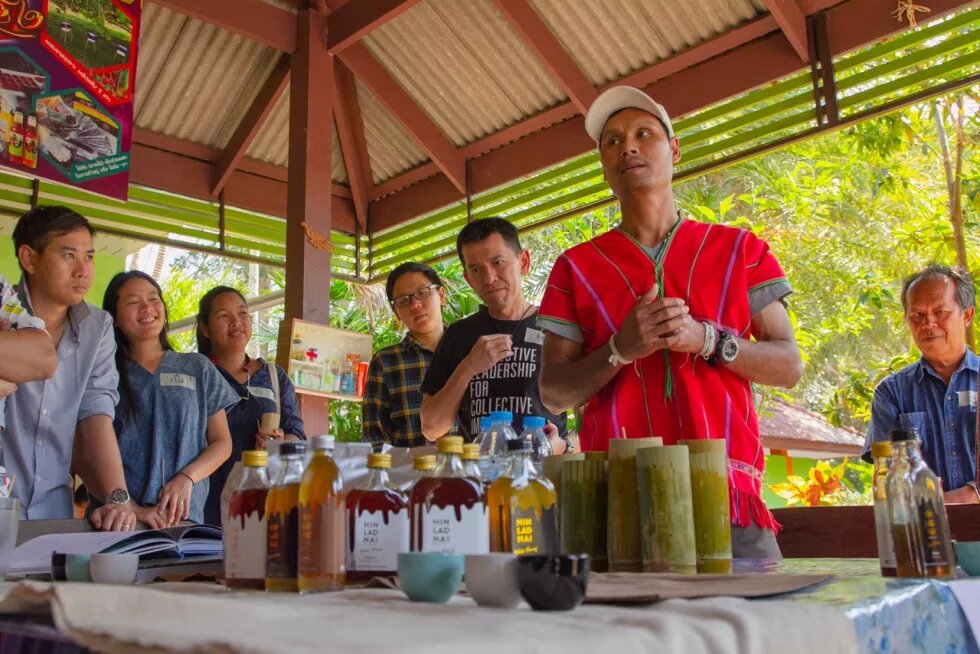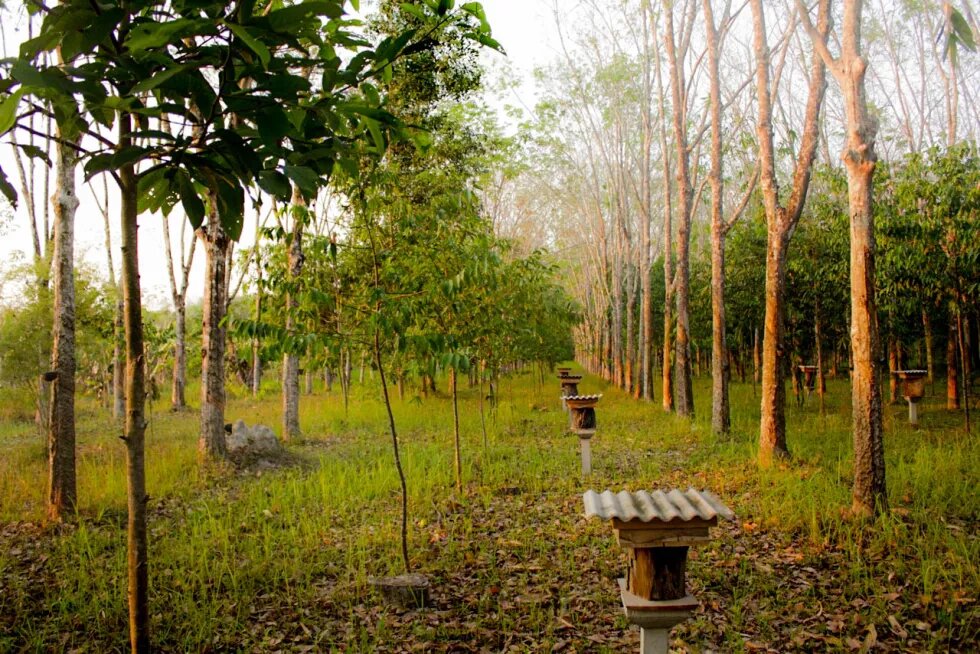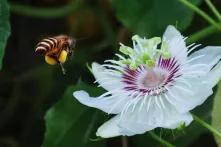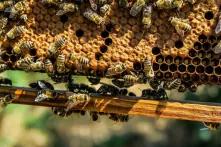
I have been on a journey of about two years so far to learn more about pollinators, native bees, and how we can help restore the health of their populations. On one hand this has become a personal journey. Now every day I observe flowers in bloom that I find in my garden or wherever I am to see if there are any pollinators, and if so, what species I find, and if there are few or many.
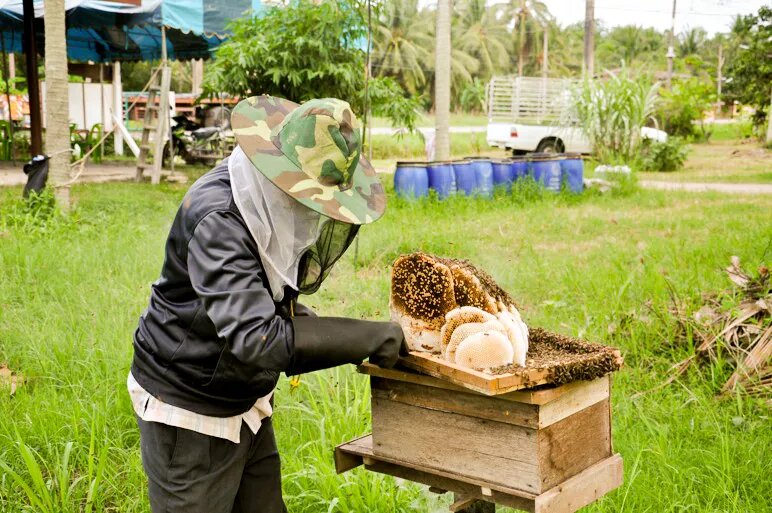
This also means finding insects that I don't yet know well and trying to learn more about them, and similarly seeking to identify unfamiliar plants where I find pollinators foraging. Then I also have been blessed to meet and learn from many teachers, real experts in this field from native beekeepers of many years, to leading researchers and academics, to others new but observant and with similar interest both in the majesty of nature and in playing some small role in keeping this critical part of the biodiversity of our planet alive and thriving. Thus it has evolved into a collective journey of people and organizations, now under the name of the Asian Pollinator Initiatives Alliance (APIA) with clearly some successes and momentum, but with much farther to go yet.
While I am still far from being an expert like some of the people I have met and learned from, my knowledge has progressed a lot since I started to consider this and then collaborated with Go Organics to develop a course on Apis cerana native beekeeping with Katrina Klett and He Guoxing that transformed my understanding and appreciation of pollinators and the threats they face.[i] So, here I wish to share a bit of what I have learned.
Southeast Asia has eight native honeybee species, four of which we find in Thailand[ii]. Three, Apis dorsata, Apis cerana, and Apis florea can be found easily throughout Thailand including Bangkok. Apis dorsata, the Asian giant honey bee, prefers to nest high up under tall tree limbs and cliff faces. In Bangkok I have seen a colony under the eaves outside a condominium penthouse. In the forest sometimes several dozen nests can be found together in one tree.These amazing trees are called bee trees and the bees come back to the same tree year after year.
Apis cerana, the Asiatic honeybee, is a cavity dwelling species similar to European honeybees but smaller and a bit more wild. Asian people have been raising these bees by providing habitat of simple hollowed out log hives for over 2000 years and this tradition continues until today. However now some beekeepers prefer using box hives with frames similar to those used with Apis mellifera.
Apis florea, the red dwarf bee, is a rising star according to Dr. Orawan Duangphakdee, an expert on native bees. This species nests on small tree branches and does not need a large area to forage. I am quite happy to have one resident colony high in a tree in my backyard, and thus I get to see these bees foraging most every day. Eric Guerin's “Native Honey Bees of Southeast Asia and Conservation Challenges” explains clearly and concisely about our native honeybees and some of the challenges they face.
While I first learned about raising the Asiatic honeybee (Apis cerana), visiting Por Somboon, an organic coconut farmer elder and friend in Ban Krut, Prachuab Khirikhan who was taught by Dr. Orawan and her team, and then much more with Katrina Klett, her husband He Guoxing and the villagers of Ban Huay Khun Phra and Ban Huay Krai in Chiang Rai,[iii] meeting researcher Eric Guerin he explained about “rafter beekeeping” a technique used in different parts of Asia including Southern Thailand, Cambodia, and Indonesia, where villagers put logs or boards of proper size and fix them in a good place and angle to be attractive for Asian giant honey bees (Apis dorsata) to establish a hive.[iv] While I had observed and learned that these bees had rather specific habitat needs, either under rock faces of cliffs as I saw on my honeymoon near Khao Sok National Park or on large, closer to horizontal, branches of tall trees, such as those of mature Dipterocarpus alatus, I did not understand that humans could help create these conditions, which is of particular value in areas with a lot of nectar but lacking in natural nesting habitat. With support from WWF Thailand, Eric has written and published a “Training Manual for Rafter Beekeeping” that explains very well about this history and how to practice this method. With this method the rafters are normally set only a couple of meters above the ground, allowing for much easier access and harvest of honey than with hives high up in the tallest trees.
While I have yet to learn and observe the methods, Dr. Orawan and some others have been promoting raising Apis florea colonies.[v] In her lecture on “Insects, Pollinators and Biodiversity in Thailand and Southeast Asia” at the Heinrich-Böll Stiftung Southeast Asia office Terrace Talk, she explained that with management honey yields of Apis florea colonies can be increased 3 to 4 times. Requiring a rather small area for foraging, this species can work well with smaller green/ floral areas and in the context of single farms and orchards. As she helps market a number of native bee honeys, she found Apis florea honey to be the most popular with consumers. As a local organic farmer near me also sells florea honey that I have been enjoying, I can agree that it has excellent flavor qualities. These bees are considered to be some of the least aggressive and their sting is supposed to be less painful. However, never having been stung by Apis florea, I don't really know, but they seem happy and calm when I find a colony. I hope to learn more about management of Apis florea and when a safe time resumes organize a short course on this with the Bee Park in Ratchaburi where Dr. Orawan is based.
Continuing with Dr. Orawan's lecture, we learned native bees are much more resilient than Apis mellifera. Dr. Orawan shared that in fact Apis mellifera populations in Thailand are suffering similar problems as in North America and Europe with an average of 30% annual colony loss. Thankfully our native bees are doing well in comparison.
Dr. Orawan in this lecture and a follow up training, Stingless Bees - Pollinator Restoration in Urban Context, that she led in early March 2020 at the Heinrich-Böll Stiftung Southeast Asia office, shared about research and studies she and her team had done on honey. A first disturbing finding was that well over half of the commercial honeys they tested in Thailand were adulterated. A study in Australia finds the same for one in five honeys.[vi] They were either not honey or not purely honey. Another study she did compared antioxidants in local native bee honeys with some leading “medicinal” honeys on the international market which found comparable or superior levels of medicinal compounds in local native bee honeys.
Stingless bee honey in Malaysia, Indonesia and increasingly in Thailand is recognized as having superior medicinal properties and usually sells for 4 times or more the price of normal honey. However she made it clear how easily the rather amazing medicinal properties of honey can be lost with heating. In testing she found that with temperatures of over 45 Celsius, beneficial compounds were already breaking down, and she said she feels pasteurized honey is little different than sugar syrup. From her studies, we also learn that tropical honeys generally have a higher moisture content and more yeast, both of which might preclude the honey from being sold as “honey” under international standards for mellifera honey. In her testing she found these yeasts to be beneficial (pro-biotic) and another benefit of native honeys. As there are not yet standards for non-mellifera honeys, she sees a need to develop standards that protect their quality, as heating honey to reduce moisture can have such a detrimental effect on the medicinal properties of the honey.
Regarding Apis dorata, Dr. Orawan shared both some disturbing and positive news. In a not yet published research she has been doing over a number of years, revisiting bee trees where populations of these giant honeybees migrate year after year, to both count the number of colonies and to compare their arrival date with peak flowering periods of key species, she has observed that the migration dates have remained largely the same. However there has been a 6 week change in timing of the flowering cycles, meaning that the bees now are arriving after the flowering cycles have passed. With this she has seen declining populations of bees, some trees that once had over 20 colonies now with around 6 colonies. In the Suan Pheung “Bee Garden” district of Ratchaburi where she is based, she has been working with the community to intentionally plant more trees and crops that can provide good fodder for bees, so they can manage even with these climate change induced shifts in the flowering cycles. On the positive side, her collaboration with traditional Mlabri people who live in and around the forests of Nan and collect dorsata honey every year, which is an important income source for them, helping teach them good harvest practices that are much less damaging to the bee colony and its brood, has led to a bounce back in honey yields from a low of only 300 kg to around 1000 kg per harvest season. Sustainable harvesting practices is also a key focus of Eric Guerin in his work in Cambodia with local honey harvesters. He explained that in harvesting only honey from the “honey head” without damaging the brood cells or taking much pollen, the colony can rebuild its honey stores quite quickly such that honey may be harvested twice or even 3 times in a season. New generation farmer leader Chaitawat Chomti of Huay Hin Lad Nai in the mountains of Chiang Rai who with his community manages and harvests honey from 100's of colonies in the forests they help steward, shared that they maintain similar harvesting practices, never taking brood, but taking only one seasonal harvest, thus allowing the colonies to recover honey stores before they leave on their next migration.
In presentations by Dr. Alyssa Stewart and Dr. Orawan Duangphakdee at the aforementioned Terrace Talk they explained with flowers (plants + trees) there are big differences in terms of what they provide to pollinators. They confirmed my personal observations that some flowering plants provide no significant nectar or pollen, such as frangipani trees and bougainvillea vines, while others provide a lot, such as pomelo flowers and water lilies. Dr. Alyssa presented her interesting studies on pollinators, counting numbers and variety of pollinator visitors to different flower species in green areas in the city.[vii] While her studies showed quite an abundance of the three common Apis species and stingless bees, all of which are generalists able to harvest honey and nectar from many species, she observed much lower numbers and diversity of other pollinators. From her study and presentation, which was also complimented by material presented by Dr. Orawan, we learned that we can consciously and intentionally grow plants that provide high quality nectar and/or pollen and thus help support pollinators. While nectar is used to produce honey and is the daily bread of adult bees, pollen, which is rich in proteins and fat, is key for raising the young brood. Katrina Klett in her presentations during our training also shared that for a healthy brood a diversity of pollen sources is needed. Seeing the visibly different colors and qualities of pollen, I think they must have different vitamins, minerals, etc., like the fruits and vegetables we eat as humans. Dr. Alyssa's “Pollinator-Friendly Yards: How You Can Help Protect Pollinators[viii]” explains pollinator-friendly practices for our context here in Southeast Asia including flowering species that are popular with bees, butterflies, birds, and bats.
All of the researchers I have met and communicated with agree there is still a real lack of research on pollinators and pesticides for Thailand and SE Asia. Searches for studies and articles came up with very little, while this topic is much more researched in Europe and North America, in particular with Apis mellifera. Prasit Wongprom, a researcher we met on the Amazing Bee Trip[ix] organized by WWF Thailand and other partners in this network as part of the Sustainable Brands event, has done some study on this topic. In his work in Chanthaburi, he tested honey samples from Apis cerana hives that were kept in organic orchards or wild areas during key fruit tree flowering periods. Lab testing found pesticide residues in their honey, and he observed dead bees in and around the hives during this period. As cerana will forage at significant distances from their hives, he understands the bees were foraging from flowers in neighboring conventional orchards that get dosed with pesticides and collecting pesticide residues with their nectar and pollen. He also worries greatly about Apis dorsata colonies in the national parks and reserves of Chantaburi which are not so far from the fruit orchards. As Apis dorsata will forage at long distances from their colonies, this species may also be bringing pesticide residues back to their colonies in these protected areas and damaging their populations. As pesticides are designed to kill insects, and bees as well as many other pollinators are insects, this area clearly needs more focus and study. Even herbicides, as Dr. Orawan shared at the Terrace Talk, are really harmful to native bees; a bit less harmful than pesticides, but they can still be lethal.
From my learning and study of this topic and understanding of the dire situation for insects, pollinators, and really so much of our biodiversity, it is clear that we can no longer leave this all- important task for our planetary food security to the fight of nature on its own, but that we must actively work with nature to restore the health of pollinator populations. With what I have been learning from my teachers and nature herself, it looks like we can do a lot if we have a bit of care and intention. I am very optimistic about what I see in “regenerative” farming systems such as those of the Rubber Agroforestry farmers I work with in Songkhla province, many of whom raise different species of stingless bees in the cool shade of their rubber forest gardens. In my many years of visiting and interviewing integrated organic farmers and forest gardeners who practice biodiverse farming free of agrochemicals, wild colonies of bees come with the restored health of the land, along with a diversity of other insects, birds, and bats. On the other side, native beekeeping can help farmers transform our practices and relationship with nature.
As I learned with Katrina Klett and the villagers we visited, where there is ample fodder, the greatest limitation may be habitat. The coconut groves of Por Somboon produce copious amounts of nectar with each flowering cycle every 45 days. If the inflorescences are cut, this nectar can be tapped to produce coconut sugar as is done in a key local industry in Samut Songkram. After Por Somboon put his bee boxes on posts under the shade of the coconut trees, in a short time they were occupied with swarming colonies, collecting his nectar and significantly improving fruit set. As Dr. Orawan has observed, those who take to beekeeping become inherently resistant to using agrochemicals as they want to protect their colonies and the benefits they provide. Even in Bangkok, where there is no regulation prohibiting beekeeping, in addition to pollinator-friendly gardening, we can raise bees. The easiest first choice might be stingless bees as they are very small and versatile foragers, even able to use young leaves in addition to nectar and pollen. They also appear to be already very well adapted to Bangkok, being one of the most commonly found pollinators in Dr. Alyssa's study. I saw my first wild colony in a pipe in one of the busiest districts of Bangkok, off Asoke street on the Srinakarinwirot University campus.
While this journey has helped me to understand the critical importance of pollinators, without whom much of our food and the life of our planet would disappear and the current crisis pollinators and much of our biodiversity face, it has also shown that we can engage in small but powerful ways to restore this health. Whether in creating small oases around our homes, workplaces, and public spaces, or in how we connect with the food system and the people who grow and raise our food, for our own health and our planetary health, we can make a difference. Impressed by what I have learnt and seen is possible, I believe with consciousness and intention we can make transformations that will support not only humanity's well-being, but the well-being of all of the wonderful species of this planet including the bees, the bats, and the butterflies.
References
[i] https://th.boell.org/en/2019/05/03/pollinators-peril-our-food-system-crisis-and-potential-restoration
[ii] https://th.boell.org/en/2020/02/13/native-honey-bees-southeast-asia-and-conservation-challenges
[v] Xingrun Li, Yufeng Qu, Junjun Zhang, Jianjun Li, Katrina Klett & Zhengwei Wang (2019): A Method to Rescue Abandoned Combs of Dwarf Honey Bees, Bee World
[vii] Stewart et al. (2018), Habitat and landscape factors influence pollinators in a tropical megacity, Bangkok, Thailand. PeerJ 6:e5335; DOI 10.7717/peerj.5335
[ix] https://www.wwf.or.th/en/scp/upcoming_event_/news_and_blog/?uNewsID=360313 https://www.youtube.com/watch?v=67TBtjfNMgU
A very nice online resource for good images of insects and other pollinators as observed in Thailand is from the Thailand Nature Project. Below is a link to their section on bees. https://www.thailandnatureproject.com/bees-of-thailand.html



